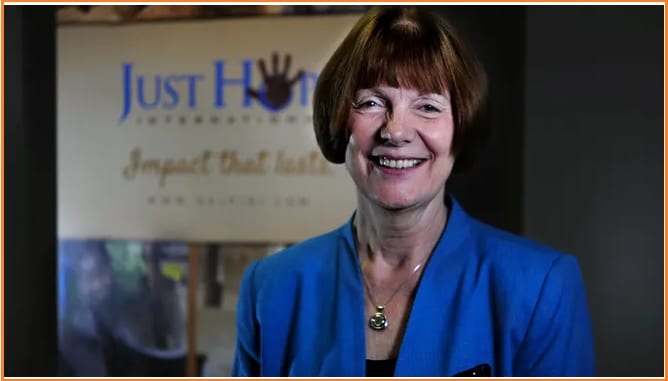Karen Bruton was dubbed The Super Trader for turning $100,000 into $190 Million in total from 2007 to 2011, in a time where the market was rocky.
Today’s topic is about Karen Super Trader Strategy, who gained infamy starting from being a frequent guest in tastytrade to being discovered as nothing but a fraud.
Bruton took on risks that made Tom Sosnoff of tastytrade and ThinkOrSwim blurt out that Karen “was a bigger man” than himself.
But who is Karen Bruton? And how did she craft the lies behind her high-risk trading and execute the game that fooled the financial world?
Read about Karen Bruton’s rise and fall now in this Karen Super Trader Strategy!
Table of Contents
Karen Super Trader Strategy: Who Is Karen Bruton
Karen Bruton was the founder of Hope Advisors, LLC., a commodity pool operator and fund manager and Just Hope International.
Just Hope International was a charity with an aim to help people from Africa, Central America and the Caribbean.
Bruton was a self-taught options trader but formerly worked as the Vice-President and Controller of Franklin-Industries.
She has an inactive CPA license, which might have lent her some form of credibility that allowed her to amass investors to fleece money off of.
According to the tastytrade interview, it all started in the year 2001, where a friend of Karen coaxed her to join a free Investools seminar.

She then took a Ph.D. program offered by Investools that costed $22,000, and fast forward 2007, took her $100,000 in Merryl Lynch to go full time into trading.
In 2008, Karen focused on options and was able to net a return of $50,000 from her initial $100,000. Remember, this was the time where the market was having a meltdown.
In the same year, she organized the HBD Fund and HI Fund and somehow between 2008 to 2011 she made $41 Million in profits.
People clamored to give Karen their money to manage, and of course, the public were in awe and questioning how did she do it.
In comes, tastytrade who thought and declared she was a “phenom” thus propelling her into stardom in the financial industry.
Karen Super Trader Strategy: The Rise Of Karen Bruton
Tastytrade interviewed her several times, twice in 2012 and again in 2014, in August and July which gained her more widespread fame.
In the videos, they asked Bruton about her past but the juiciest part of the interviews was when they drilled her about what strategies she uses and how she achieved huge profits in a market that was in a downturn.
In one of the videos she mentioned, she “hates using stop loss” which was a tell-tale sign of a reckless trading, but you have to admit she sounded pretty convincing.
She admits in committing a significant amount of capital which is about 70%, that Sosnoff commented Bruton was an “all-in kind of trader”.
At one point, Sosnoff asked if there was a Delta, an amount of directional risk, that Bruton kept track, to which she flat out said there was no Delta involved.
This according to Forbes, was a significant red flag for any member of the risk management community.
But just like Amaranth, MF Global, Volume Investors, Klein Commodities, and Bernie Madoff, this was a risk management disaster bomb waiting to go off.
The Fall of Karen Bruton
Indeed, Karen The Super Trader did detonate due to volatility in the financial markets.
In 2016, SEC served Hope Advisors a litigation complaint on a hot plate.
The complaint alleged that, from at least October 2014 to May 2016, the Karen Bruton and company violated federal securities laws by scheming to collect extra monthly fees from the two hedge funds.
These are summary of the SEC complaints:
1. This enforcement action arises out of a fraudulent scheme to generate fees by Hope Advisors, LLC (“Hope”), a registered investment adviser, its principal, Karen Bruton, (collectively, “Defendants”). Hope managed the account of two private investment funds, Hope Investments, LLC (the “HI Fund”) and HDB Investments, LLC (“HDB”) (collectively, the “Funds”). Hope’s only compensation for managing the funds came in the form of an incentive fee, calculated as a share (10% for the HI Fund and 20% for HDB) of the profits earned in the Funds’ accounts.
2. The HI Fund and HDB employed a “high-water-mark” fee structure pursuant to which Hope was entitled to no fees unless the Funds made profits that exceeded past losses. In other words, all prior losses needed to be made up before Hope would be paid. Since at least November 2014, Hope and Bruton have engaged in a continuous pattern of fraudulent trading to circumvent the impact of the high-water-mark fee structure. The fraudulent trading exploited the HI Fund’s obligation to calculate the incentive fee exclusively on the basis of monthly “realized” gains and losses—“unrealized” gains and losses (i.e., those attributable to open trading positions at a month’s end) were not included in the fee calculation.
3. Each month, Hope caused the Funds to make certain “Scheme Trades” that had the purpose and effect of realizing a large gain in the current month while effectively guaranteeing a large loss would be realized early the following month. In essence, these trades continuously converted any realized losses into realized gains in the current month, and losses which would be realized in subsequent months, except that they would be continually deferred by the Defendants engaging in additional Scheme Trades. The Defendants did not simply delay the realization of trading losses, however, they also intentionally sized the Scheme Trades such that the Funds realized a profit every month. Hope employees maintained a spreadsheet that tracked, month to date, the realized losses of the Funds. As the end of each month approached, Bruton picked the amount of profit she wished the Funds to show (and de facto, the fees she wished to generate), and her traders would size the Scheme Trades accordingly.
4. Without the fraudulent Scheme Trades, Hope would have received almost no incentive fees from at least October 2014 through the present. Instead, Hope extracted millions of dollars in incentive fees. In recent months, Hope has been using Scheme Trades to avoid the realization of more than $50 million in losses, while still earning large monthly incentive fees.
5. In addition to the incentive fee paid to Hope by the HI Fund, the fund paid a 10% incentive fee to the Just Hope Foundation (the “Hope Foundation”), which in turn funded Just Hope International (the “Hope Charity”), a charity founded and run by Bruton. The Hope Foundation and its employees (aside from Bruton) were not involved in the fraudulent trading scheme, however, it did not provide any goods or services to the HI Fund in exchange for the incentive fees the Hope Foundation was paid. Accordingly, the Hope Foundation was unjustly enriched and is a Relief Defendant in this action.
SEC vs Hope Advisors, LLC, and Karen Bruton and Just Hope Foundation
The issue with Karen is that at the end of the month she sold ITM calendar spreads and only used half the trade (the sale) to manufacture gains.
She sold front month ITM options, bought back month ITM options, then “ignored” the fact that in between the two assignments of the calendar spread, the fund was inventorying a lot of underwater futures contracts.
SEC called it a “Scheme Trade” because it was specifically used to produce the appearance of gains, which Bruton used to pocket incentive fees.
To which she should not have been entitled to since the fund was at a loss of $50 Million.
73. The net effect of the Scheme Trades was to allow Hope to defer indefinitely the Funds’ realization of trading losses while consistently reporting a realized gain in the Funds and collecting an incentive fee.
74 – To illustrate with a specific example, the HI Fund began the month of February 2015 with a net unrealized loss of $44 million. Much of this loss became realized early in the month.
75 – On February 24, 2015, Hope caused the HI Fund to sell 7,000 call options (i.e., first leg options) on S&P 500 E-mini futures with a strike price of $2,000, for a sales price of $39,228,812.50. These first leg options expired on Friday, February 27 (i.e., 3 days later).
76 – That same day, Hope caused the HI Fund to buy 7,000 call options (i.e., second leg options) on S&P 500 E-mini futures with the same strike price as the first leg options. The total purchase price was $39,556,075. These second-leg options expired on Friday, March 6 (i.e., 10 days later).
Karen Bruton settled with $1,237,235 for the ill-gotten gains and a civil penalty of $250,000 on September 19, 2018.
What Strategies Did Karen Bruton Use
In the tastytrade interviews, Burton revealed the Karen the Super Trader strategy:
- Focusing solely on options
- Give up technical analysis
- Keep tabs on price and volume
- Bollinger Bands to observe the standard deviations in a graphical form
- Selling premium index strangles in SPX, NDX, and RUT
- In high volatility months, she would trade, sell and collect premiums consistently
- If volatility for that month, the front-month expire worthlessly
- She would open two standard deviations to the underlying’s CV
- She would sell call and puts 95% OTM
- Working off of Theta and not bothering with Delta
- Trading very short, being in the market for as long as 56 days or shorter
These are the Karen Super Trader Strategies that she claimed she used to not incur a single loss in 2013.
This would have been all well and good if it did work, and SEC did not catch a whiff of how she generated fees to fatten up her pockets.
Final Thoughts: A Different Kind Of Karen
In this Karen Super Trader Strategy article, we learned that Karen Bruton is not the Karen you are thinking of, but is probably the worst kind of Karen there is.
How worst? The “steal your money” kind of Karen.
Also, tastytrade worded it nicely by saying “non-conventional ways”, but the allegations state that she was running a Ponzi-like scheme.
Basically, it meant that Karen was a Bernie Maddoff in the making.
The main key takeaway here is that no matter how many years of trading a person has under his or her belt, they still cannot verify how legitimate a strategy without digging into the matter.
Therefore, it is of utmost importance to not get carried away and jump on the latest trend just because a famous person said so and so.
Do not let the Fear of Missing Out guide in your trading or investing decisions, instead do your due diligence and verify if that trend is legitimate or a fraud.
A “furu” (fake guru) named Andrew Keene is also only interested in fattening his pockets. Find out the juicy details in our The 1450 Club Review!
Click Here to Read My # 1 Top Scam: 1450 Club Review
Thoughts? Comment them down below!
